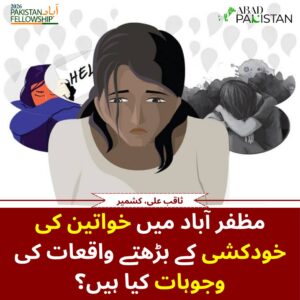Mahnoor
Gender discrimination is prohibited under almost every human rights treaty. This includes international laws providing for equal gender rights between men and women, as well as those specifically dedicated to the realization of women’s rights, such as the Convention on the Elimination of Discrimination Against Women [2] – considered the international bill of rights for women.
Federal, state and local laws protect individuals from gender discrimination and gender inequality in the United States. Additionally, it is recognized in both law and policy that promoting gender equality is critical to achieving foreign policy objectives for a more prosperous and peaceful world.gender inequality.

Gender Inequality Examples:
Gender inequality in girls’ education. Even before the pandemic, girls were more likely than boys to never set foot in a classroom and be denied equal opportunities. Conflict, poverty and other forms of social disadvantage also magnify gender inequality in education. Girls living in countries affected by conflict, for example, are 2.5 times more likely to be out of school than boys. Some 9.7 million children were at risk of being forced out of school by the end of 2020, with girls facing an increased risk.
Child marriage
. Child marriage is a form of gender-based violence and a result and driver of gender inequality and gender discrimination. Experts predict that the COVID-19 pandemic is set to reverse 25 years of progress, which saw child marriage rates decline. In fact, Save the Children analysis revealed a further 2.5 million girls at risk of marriage by 2025 because of the pandemic—the greatest surge in child marriage rates in nearly three decades.
Gender-based violence. Gender-based violence occurs everywhere around the world across all economic and social groups. While both boys and girls are negatively impacted, girls are particularly at risk. An estimated 1 in 3 women globally have experienced physical or sexual violence in their lifetime, mostly at the hands of their partners.
Types of violence may include:
prenatal sex selection, female infanticide, neglect, female genital mutilation, rape, child marriage, forced prostitution, honor killing and dowry killing. Many of these gross violations of human rights have been used as weapons of war around the world. Refugee children are particularly vulnerable.
Child Labor:
. There are currently 152 million children engaged in child labor around the world. Child labor makes it difficult for children to attend school or limits their attendance, putting them at risk of falling behind their peers. Boys and girls are affected differently by child labor and parents’ decisions are often influenced by wider social norms about the different roles that they should play in the home and in society. Girls are much more likely to shoulder the responsibility for household chores while boys are more likely to engage in harmful work such as construction.
What are the effects of gender inequality?
Gender prejudice and resulting gender discrimination begin in childhood. From the moment they’re born, girls and boys face unequal gender norms as well as social norms regarding expectations and access to resources and opportunities, with lifelong consequences – in their homes, schools and communities.
For example,
the world’s boys are often encouraged to go to school and get an education to prepare for work, while girls carry heavy household responsibilities that keep them from school, increasing the odds of child marriage and pregnancy. Conflict, poverty and other forms of social disadvantage also magnify gender inequality in education. Girls living in countries affected by conflict, for example, are 2.5 times more likely to be out of school than boys. Some 9.7 million children were at risk of being forced out of school by the end of 2020, with girls facing an increased risk.
Child marriage.
Child marriage is a form of gender-based violence and a result and driver of gender inequality and gender discrimination. Experts predict that the COVID-19 pandemic is set to reverse 25 years of progress, which saw child marriage rates decline. In fact, Save the Children analysis revealed a further 2.5 million girls at risk of marriage by 2025 because of the pandemic—the greatest surge in child marriage rates in nearly three decades.
Gender-based violence.
Gender-based violence occurs everywhere around the world across all economic and social groups. Types of violence may include: prenatal sex selection, female infanticide, neglect, female genital mutilation, rape, child marriage, forced prostitution, honor killing and dowry killing. Many of these gross violations of human rights have been used as weapons of war around the world. Refugee children are particularly vulnerable.
How to Fight Gender Inequality
Gender inequality is an old-age issue that won’t resolve within a few days. Similarly, achieving the goal of equality is also not going to be an easy one. We must start by breaking it down and allow it time to go away.
Firstly, we must focus on eradicating this problem through education. In other words, we must teach our young ones to counter gender stereotypes from their childhood.
Further, we must promote equality in the fields of labour. For instance, some people believe that women cannot do certain jobs like men. However, that is not the case. We can also get celebrities on board to promote and implant the idea of equality in people’s brains.

Conclusion:
All in all, humanity needs men and women to continue. Thus, inequality will get us nowhere. To conclude the gender inequality essay, we need to get rid of the old-age traditions and mentality. We must teach everyone, especially the boys all about equality and respect. It requires quite a lot of work but it is possible. We can work together and achieve equal respect and opportunities for all genders alike.





